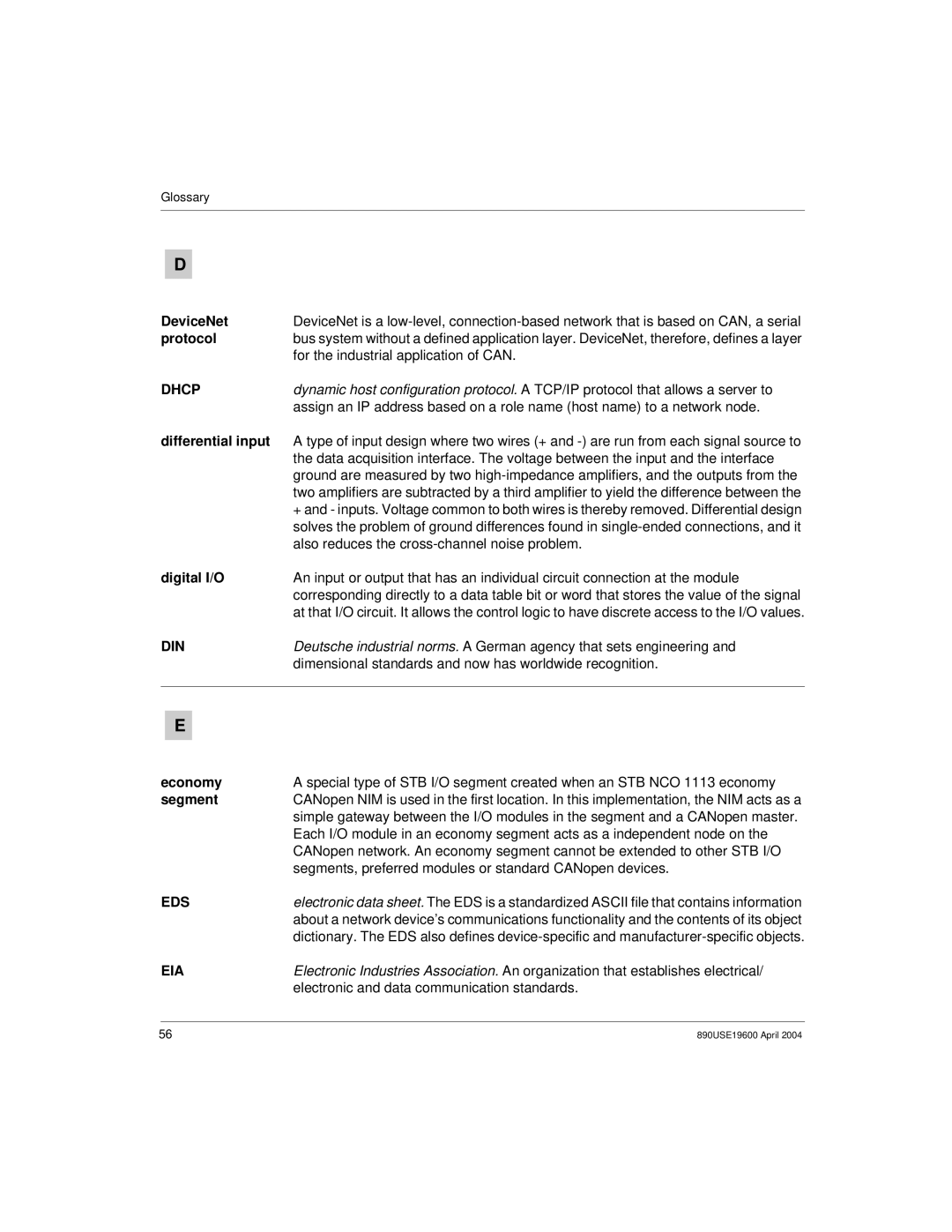
Glossary
D
DeviceNet | DeviceNet is a |
protocol | bus system without a defined application layer. DeviceNet, therefore, defines a layer |
| for the industrial application of CAN. |
DHCP | dynamic host configuration protocol. A TCP/IP protocol that allows a server to |
| assign an IP address based on a role name (host name) to a network node. |
differential input A type of input design where two wires (+ and
+and - inputs. Voltage common to both wires is thereby removed. Differential design solves the problem of ground differences found in
digital I/O | An input or output that has an individual circuit connection at the module |
| corresponding directly to a data table bit or word that stores the value of the signal |
| at that I/O circuit. It allows the control logic to have discrete access to the I/O values. |
DIN | Deutsche industrial norms. A German agency that sets engineering and |
| dimensional standards and now has worldwide recognition. |
|
|
E
economy | A special type of STB I/O segment created when an STB NCO 1113 economy |
segment | CANopen NIM is used in the first location. In this implementation, the NIM acts as a |
| simple gateway between the I/O modules in the segment and a CANopen master. |
| Each I/O module in an economy segment acts as a independent node on the |
| CANopen network. An economy segment cannot be extended to other STB I/O |
| segments, preferred modules or standard CANopen devices. |
EDS | electronic data sheet. The EDS is a standardized ASCII file that contains information |
| about a network device’s communications functionality and the contents of its object |
| dictionary. The EDS also defines |
EIA | Electronic Industries Association. An organization that establishes electrical/ |
| electronic and data communication standards. |
56 | 890USE19600 April 2004 |
